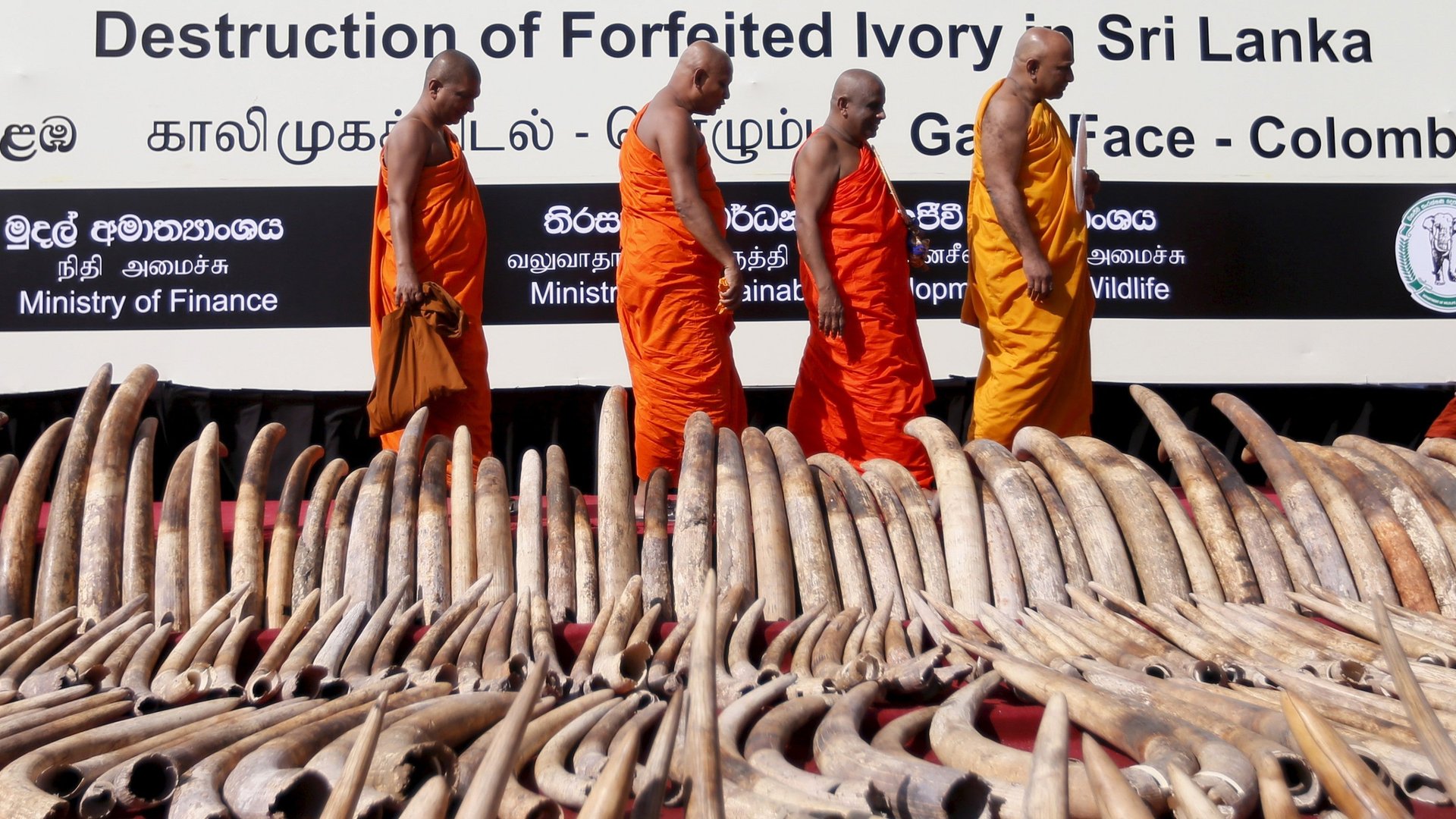“We destroyed those innocent lives”: In a global first, Sri Lanka ceremonially demolishes and apologizes for its ivory
This week, Sri Lanka became the 16th country in the world, and the first in South Asia, to publicly destroy a pile of ivory as a symbolic gesture against elephant and rhino poaching. It was the first public ceremony of its kind to incorporate religious prayers as a formal apology to the animals that had been killed for their tusks.


This week, Sri Lanka became the 16th country in the world, and the first in South Asia, to publicly destroy a pile of ivory as a symbolic gesture against elephant and rhino poaching. It was the first public ceremony of its kind to incorporate religious prayers as a formal apology to the animals that had been killed for their tusks.
“We have to apologize,” said one of the priests who led the ceremony, in an interview with National Geographic. “Those elephants were victimized by the cruelty of certain people. But all of human society is responsible. We destroyed those innocent lives to take those tusks. We have to ask for pardon from them.”
The government’s entire stockpile of ivory, 359 elephant tusks weighing 1.5 tons, was assembled on a waterfront promenade in the capital city of Colombo Tuesday. Before the tusks were fed into a crusher and then burned in an incinerator, the crowd observed two minutes of silence in remembrance of the elephants. Then Buddhist, Christian, Hindu, and Muslim leaders officiated funeral rites for the slain animals.
International trade in ivory was banned in 1990 by 179 countries under the United Nations Convention on International Trade in Endangered Species (CITES), with some limited exceptions, such as permitted hunting trophies and worked ivory acquired prior to a certain date. The body has also allowed two sales of ivory since then, in 1999 and 2008, under pressure from Asian and southern Africa countries. The ban has allowed elephant populations to rebound somewhat, but a black market persists because so many people revere carved tusks as religious objects and status symbols.
The impact of public displays of ivory destruction on illegal trade is subject to some debate, with the World Wildlife Fund saying that the displays need to be combined with increased efforts to stop poaching and smuggling in order to be effective.
The pile of elephant tusks destroyed in Colombo Tuesday all came from a single illegal shipment intercepted by Sri Lankan customs officials in 2012. In 2013, the national government considered donating the ivory to a Buddhist temple, but critics said the ivory might find its way back onto the black market, and that transferring possession of the ivory would violate CITES. When Sri Lanka’s current president, Maithripala Sirisena, took office in 2015, the government was decisive about the benefits of destroying the ivory instead.
Sirisena appeared at the stockpile crushing alongside the CITES secretary general John Scanlon. Sri Lanka’s prime minister, finance minister, and wildlife minister also attended. The ceremony was deliberately scheduled to coincide with International Customs Day.
“We are trying to demonstrate that there is no value for blood ivory,” Colombo Customs Director Udayantha Liyanage told the press.